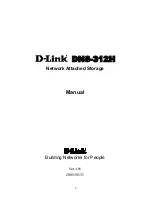
Boot Failures
CSMIM2 Installation Guide
4-13
Table 4-8
Indicator States during a Dump
Key:
●
= On continuously
■
= Flashing irregularly
The CSMIM2 sends a dump file to a preferred load dump host. If you do
not define this host by specifying an address, the CSMIM2 broadcasts a
request and dumps to the first host that responds.
The dump creates a file in the dump host’s directory, named
/usr/spool/erpcd/bfs, and assigns a unique file name for each CSMIM2
but not for each crash dump. For each dump, the CSMIM2 overwrites the
existing file.
The assigned name depends on the number of characters per file name
that the dump host supports. For hosts supporting file names longer than
14 characters (e.g., BSD hosts), dump files are named dump.addr. The
file extension addr is the CSMIM2’s Internet address.
For hosts that limit file names to 14 characters (e.g., System V hosts), a
dump creates two additional directories under /usr/spool/erpcd/bfs. The
name of the first directory is dump; the second directory uses the
CSMIM2’s Internet network address as its name. The dump file uses the
CSMIM2’s Internet host address as its name.
Each dump file contains a complete image of the CSMIM2 RAM memory
and hardware state. The amount of space required for a dump file varies
according to the port configuration. The ROM Monitor config command
displays the amount of memory for the CSMIM2. Table 4-9 shows
sample dump file names. All pathnames are relative to the file
/usr/spool/erpcd/bfs.
Activity
Stat
green
Attn
red
Traf
green
Dump
l
l
n
Table 4-9
Dump File Naming Conventions
CSMIM2
Address
Network
Address
BSD
Filename
System V
Pathname
63.0.0.75
63
dump.63.0.0.75
dump/63/0.0.75
131.140.23.1
131.140
dump.131.140.23.1
dump/131.140/23.1
195.46.2.15
195.46.2
dump.195.46.2.15
dump/195.46.2/15
















































